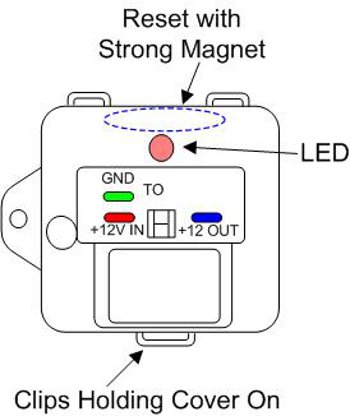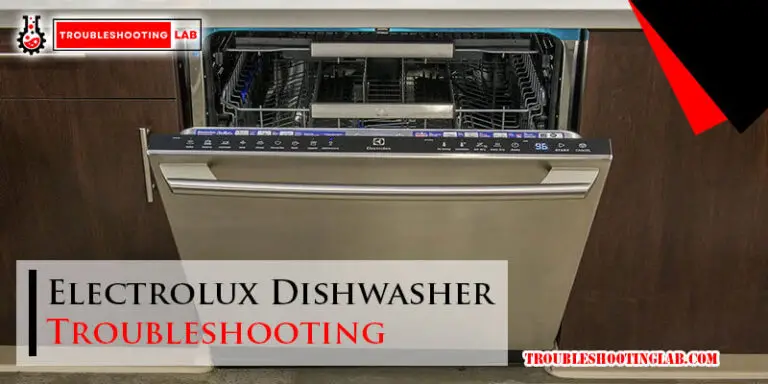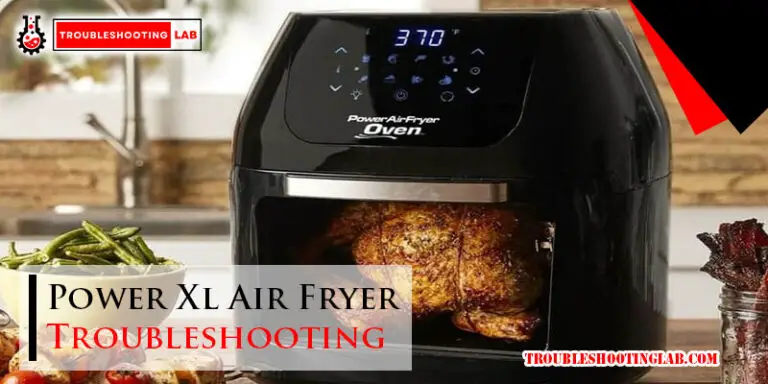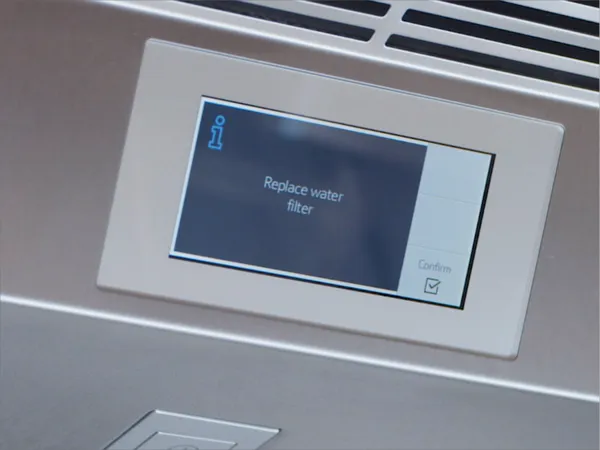Nor Cold Rv Refrigerator Troubleshooting: Quick Fix Guide
Is your Norcold RV refrigerator giving you trouble? Whether it’s failing to cool, making strange noises, or simply not working at all, it can quickly turn your road trip into a frustrating experience.
But don’t worry—you’re not alone, and you don’t have to call a repair technician just yet. This guide will walk you through simple troubleshooting steps to get your fridge back on track. By the time you finish reading, you’ll feel more confident about identifying the issue and, in many cases, fixing it yourself.
Let’s get your RV fridge running smoothly so you can focus on enjoying your adventure!
Common Issues With Norcold Rv Refrigerators

Keeping your Norcold RV refrigerator in top condition is essential for any road trip. But like any appliance, it can run into problems. Understanding common issues can save you time, money, and frustration on the road.
Refrigerator Not Cooling
A refrigerator that doesn’t cool properly can ruin your travel plans. Check if the fridge is level—RV refrigerators rely on gravity to circulate cooling fluids. If your RV is parked on an uneven surface, the cooling system might not work efficiently.
Inspect the vents and coils for dirt or obstructions. Dust buildup can reduce airflow and impact cooling. Cleaning these areas regularly can prevent this issue.
Another common culprit? The door seal. If you notice warm air getting in, test the seal by closing the door on a piece of paper. If the paper slides out easily, the seal needs to be replaced.
Unit Won’t Turn On
When your Norcold RV refrigerator refuses to turn on, start with the basics. Check the power supply—ensure the RV is plugged in, and the circuit breaker hasn’t tripped. Sometimes, a loose connection can be the root cause.
If the power supply is fine, inspect the control board. Burnt or damaged wires can prevent the fridge from starting. Replacing these requires technical skill, so don’t hesitate to get professional help if needed.
Are you using propane mode? Verify that the propane tank is full and the valve is open. The fridge won’t work on propane if the supply is interrupted.
Unusual Noises
Loud or unusual noises can be unsettling. Often, these noises come from the fan or cooling unit. Dust can clog the fan and cause it to rattle—cleaning the fan may solve the issue.
If the noise persists, it could indicate a failing cooling unit. A technician might need to assess whether a replacement is necessary. Ignoring these sounds can lead to bigger issues down the road.
Foul Odors Inside
A smelly refrigerator can make your RV feel uninviting. Start by removing expired food or spills that may have gone unnoticed. Sometimes, odors linger even after cleaning—placing a box of baking soda or activated charcoal inside can help absorb smells.
Check the drip tray beneath the fridge. Accumulated water can become stagnant and cause odors. Empty and clean the tray regularly to prevent this.
Lastly, inspect the fridge for mold. Wipe down all surfaces with a mixture of water and vinegar to eliminate bacteria and keep the interior fresh.
Have you experienced any of these issues with your Norcold RV refrigerator? Share your tips or questions in the comments below!
Basic Checks Before Troubleshooting

Before diving into complex fixes for your Norcold RV refrigerator, start with basic checks. These quick steps can save time and help pinpoint simple issues. Many problems stem from overlooked areas that require minimal effort to address.
By ensuring essential components function properly, you can avoid unnecessary repairs. Follow these guidelines to make troubleshooting easier and more effective.
Power Supply Verification
Ensure the refrigerator receives adequate power. Check if it’s plugged in securely. Verify the power outlet is functional by testing another device. If the refrigerator runs on battery, inspect the battery charge level. Weak batteries may cause inconsistent performance.
Switch the refrigerator to alternate power sources, such as propane or AC power. If it works on another source, the issue may be with the primary power connection. Confirm the RV’s electrical system is distributing power properly.
Inspecting The Fuse And Circuit Breaker
Check the fuse that supports the refrigerator’s electrical system. A blown fuse can disrupt power flow entirely. Replace the fuse if it’s damaged or burned out.
Inspect the circuit breaker in your RV’s control panel. A tripped breaker can cause power interruptions. Reset the breaker to restore power. If it keeps tripping, investigate further for underlying electrical faults.
Ensuring Proper Ventilation
Proper airflow is critical for the refrigerator’s performance. Check the ventilation grills at the back or sides of the refrigerator. Remove obstructions like dust, debris, or items blocking airflow.
Ensure the RV refrigerator is installed with enough space around it. Poor ventilation can cause overheating and reduce cooling efficiency. Clean external vents regularly to maintain proper air circulation.
Quick Fixes For Cooling Problems
Is your Norcold RV refrigerator struggling to keep things cool? Don’t worry—most cooling problems can be tackled with simple fixes. Let’s dive into practical solutions you can try right now to get your fridge back on track.
Adjusting The Thermostat
Sometimes the issue is as simple as an incorrect thermostat setting. Check the thermostat dial inside your fridge. Is it set too low or too high?
If your fridge isn’t cooling properly, try turning the thermostat to a colder setting and monitor the temperature for a few hours. On the other hand, if items are freezing in the fridge section, adjust it slightly warmer. Small tweaks can make a big difference, so don’t overlook this step.
Cleaning The Condenser Coils
Dirty condenser coils can cause your refrigerator to lose cooling power. Over time, dust and debris build up, blocking proper airflow. When was the last time you cleaned them?
Locate the condenser coils at the back or bottom of your fridge. Use a soft brush or vacuum cleaner to remove the dirt. Cleaning them not only improves performance but also helps your fridge use less energy.
Leveling The Rv
Did you know your RV’s level affects how your refrigerator works? RV refrigerators rely on gravity to circulate coolant. If your RV isn’t level, your fridge can’t cool efficiently.
Use a bubble level to check if your RV is sitting evenly. If it’s not, adjust your RV’s leveling jacks or use leveling blocks until everything is balanced. A simple adjustment can save you from bigger headaches down the road.
These quick fixes often solve common cooling problems. Which one are you going to try first?
Addressing Electrical Issues
Dealing with electrical issues in your Norcold RV refrigerator can be frustrating, but it’s often easier to fix than you might think. Electrical problems are common culprits behind a non-functional fridge, and addressing them systematically can save you from unnecessary stress (and spoiled food). Let’s break down the steps you can take to troubleshoot and resolve these issues efficiently.
Testing The Power Outlet
Start by confirming that your power outlet is delivering electricity. Plug a small device, like a phone charger or lamp, into the same outlet your refrigerator uses. If the device doesn’t work, the issue likely lies with the outlet itself.
Check your RV’s circuit breakers to see if one has tripped. Reset the breaker if necessary and test the outlet again. If the outlet still doesn’t work, you might need to inspect the overall power supply or consult a professional electrician.
Replacing A Blown Fuse
A blown fuse can stop your Norcold refrigerator from working altogether. Locate the fuse panel in your RV, typically near the control center or under a cabinet.
Identify the fuse connected to the refrigerator. If the metal filament inside the fuse is broken or burnt, it needs to be replaced. Always use a fuse with the same amperage rating to avoid damaging the circuit.
Keep a few extra fuses on hand during your trips. That way, you’ll always be prepared if this issue pops up again.
Inspecting Wiring Connections
Loose or damaged wiring can also cause electrical issues. Begin by unplugging your refrigerator to ensure safety while inspecting the connections.
Look for any frayed, disconnected, or burnt wires near the back of the unit. Pay close attention to the power cord and the area where it connects to the fridge. Tighten loose connections and replace damaged wires immediately.
If you’re not comfortable handling electrical wiring, don’t hesitate to call an expert. It’s better to be safe than risk further damage—or worse, an electrical fire.
Isn’t it reassuring to know that many electrical problems are fixable with just a little effort? Testing, replacing, and inspecting are simple steps that can get your Norcold refrigerator back in action without breaking the bank. And if you ever feel stuck, there’s no shame in reaching out for help. After all, a cold fridge means you can focus on enjoying your RV adventure instead of worrying about spoiled food!
Gas-related Troubleshooting Tips
Having trouble with your Norcold RV refrigerator running on gas? You’re not alone. Gas-related issues are common, but the good news is they are usually fixable with a few simple steps. Let’s tackle this together, starting with the basics.
Checking The Propane Supply
Start by ensuring your propane tank isn’t empty. It might sound obvious, but many RV owners overlook this when troubleshooting. Check your tank’s gauge and verify that there’s enough propane to power your refrigerator.
If the gauge shows propane but the refrigerator still won’t ignite, double-check that your tank’s valve is fully open. Sometimes, a partially opened valve can restrict the flow of gas and cause issues.
Also, inspect the propane hose for cracks or leaks. A damaged hose can lead to gas flow problems. If you suspect a leak, use soapy water to test it—bubbles will indicate trouble.
Cleaning The Burner Assembly
A dirty burner assembly can disrupt the ignition process. If you notice inconsistent cooling or hear clicking sounds, dirt or debris might be the culprit. Cleaning the burner assembly is easier than you think.
Turn off the propane and wait for the assembly to cool. Remove the burner cover and use a soft brush or compressed air to clear out any dust and debris. Be careful not to damage the components while cleaning.
If there’s stubborn grime, gently wipe it away with a damp cloth. Don’t forget to check the burner jet for blockages—it’s a tiny opening that’s crucial for proper gas flow.
Inspecting The Gas Valve
Your refrigerator’s gas valve regulates propane flow, so a malfunctioning valve can lead to cooling issues. First, confirm that the valve is in the correct position for operation. Sometimes, it may be accidentally moved.
Next, check for physical damage or corrosion. A corroded valve can restrict gas flow and needs replacing. If you’re unsure about the valve’s condition, consult your refrigerator’s manual for specific troubleshooting guidance.
If the valve seems fine but the refrigerator still won’t cool, consider calling a professional. Gas valves are delicate, and improper handling can worsen the issue.
Have you faced a gas-related issue with your Norcold RV refrigerator before? What worked for you? Share your tips in the comments below—your experience might help someone else on their RV adventure.
When To Seek Professional Help
Dealing with Norcold RV refrigerator issues can be frustrating. While basic troubleshooting can fix minor problems, some situations require expert attention. Understanding when to seek professional help ensures your refrigerator works safely and efficiently. Below are key instances where calling a professional is essential.
Identifying Complex Problems
Some refrigerator issues are difficult to diagnose without technical knowledge. For example, if the cooling unit stops working entirely, the cause may involve multiple components. Electrical system malfunctions or gas system issues are also harder to assess without proper tools. Professionals have the expertise to identify and solve such complex problems.
Signs Of Component Failure
Component failure often leads to noticeable symptoms. A fridge that fails to cool may have a faulty thermostat or compressor. Unusual noises or burnt smells might signal motor or wiring problems. Leaking ammonia or yellow residue indicates a damaged cooling unit. These issues usually require specialized repairs or part replacements.
Warranty And Repair Options
Many Norcold RV refrigerators come with a warranty. Attempting DIY repairs can void this coverage. Always check your warranty terms before repairing the unit yourself. Authorized service centers handle repairs while keeping your warranty intact. They also use genuine replacement parts, ensuring better performance and reliability.
Preventive Maintenance Tips

Keeping your Norcold RV refrigerator running efficiently doesn’t have to be a guessing game. With a few simple preventive maintenance practices, you can avoid many common issues before they start. Think of it as giving your refrigerator the care it needs to stay reliable during your travels.
Regular Cleaning Routines
A clean refrigerator isn’t just about hygiene—it’s about performance. Dust and debris can clog vents or block airflow, causing your refrigerator to work harder than it should. Clean the exterior vents regularly using a soft brush or vacuum attachment.
Don’t forget the inside. Wipe down shelves and walls using warm soapy water to remove spills and prevent odors. Pay attention to the drain tray at the back—it can accumulate water or mold if left unchecked.
Checking Seals And Gaskets
Your refrigerator’s seals and gaskets are tiny but mighty. They keep cold air in and warm air out, ensuring your food stays fresh. Check them for cracks, tears, or dirt buildup that could compromise their effectiveness.
A simple dollar bill test can help. Close the door on a dollar bill and try to pull it out. If it slides easily, your gasket might need cleaning or replacement. Use a damp cloth to clean seals regularly, keeping them grime-free and functional.
Proper Storage Practices
How you load your RV refrigerator matters more than you think. Overloading can block airflow, while underloading can make cooling uneven. Find a balance by spacing items out and leaving room for air circulation.
Use containers to organize food and prevent spills. Avoid placing hot food directly inside, as it forces the refrigerator to work harder to cool down. If you’re storing your RV for a while, keep the fridge door slightly open to prevent mold buildup.
Have you checked your Norcold RV refrigerator lately? These small steps can save you from bigger headaches down the road. Start now, and enjoy hassle-free cooling on your adventures!
Conclusion
Troubleshooting your Norcold RV refrigerator doesn’t have to be stressful. Start with basic checks like power supply and temperature settings. Clean coils and vents to improve efficiency. Address common issues such as faulty thermistors or blocked propane lines. Regular maintenance prevents bigger problems down the road.
Consult the user manual for guidance or seek professional help if needed. A well-functioning refrigerator ensures your RV trips stay comfortable and hassle-free. Keep it running smoothly with these simple tips. A little care goes a long way in extending its lifespan.
Safe travels and happy camping!






Our NorCold refrigerator keeps shutting off whether it is on electric or propane.
If it is too hot in our garage, could that keep it tripping the switch?
Hi there! A hot garage can definitely cause your NorCold refrigerator to shut off on both electric and propane. Here’s a quick checklist to help:
If it still shuts off in normal temperatures, a technician might need to inspect the control board or sensors. Proper airflow and maintenance usually solve the issue!